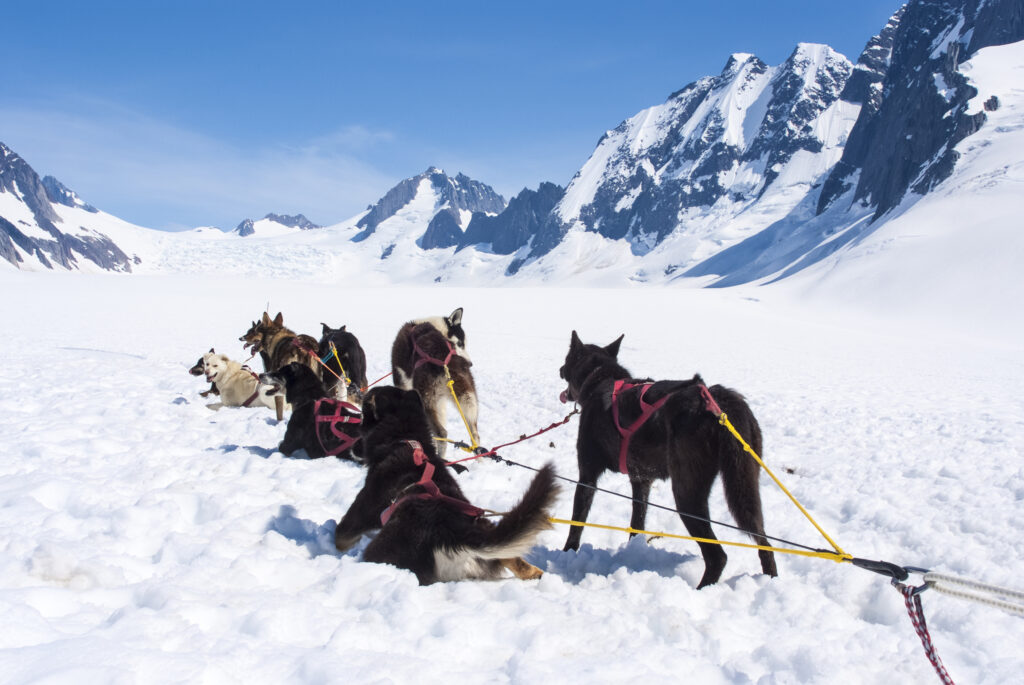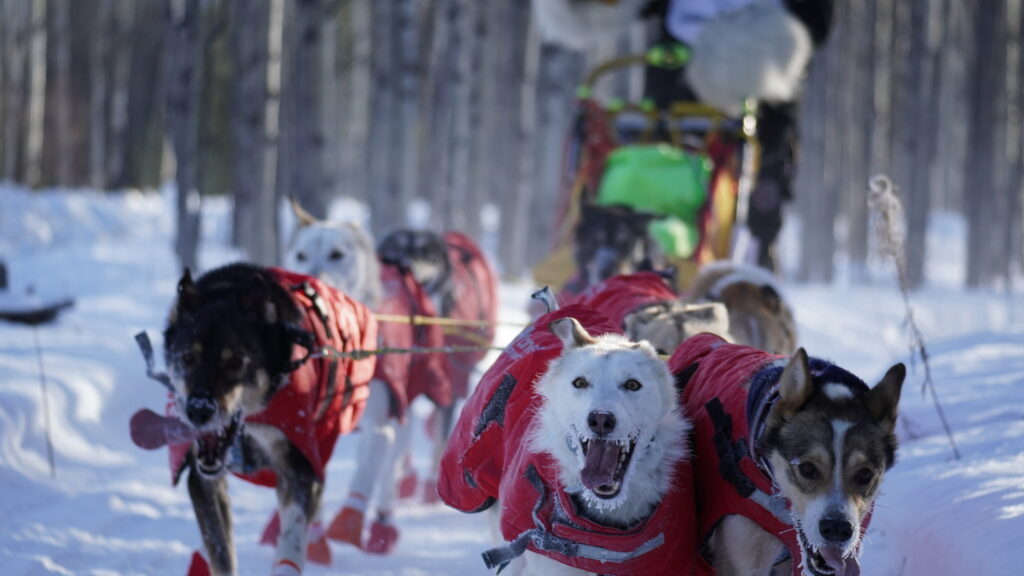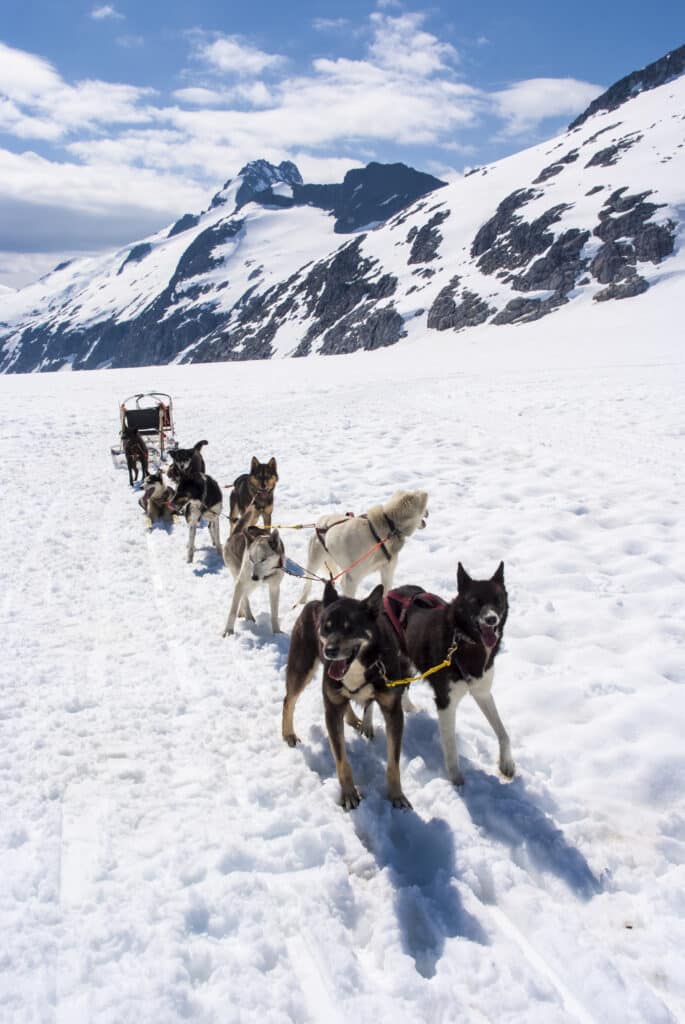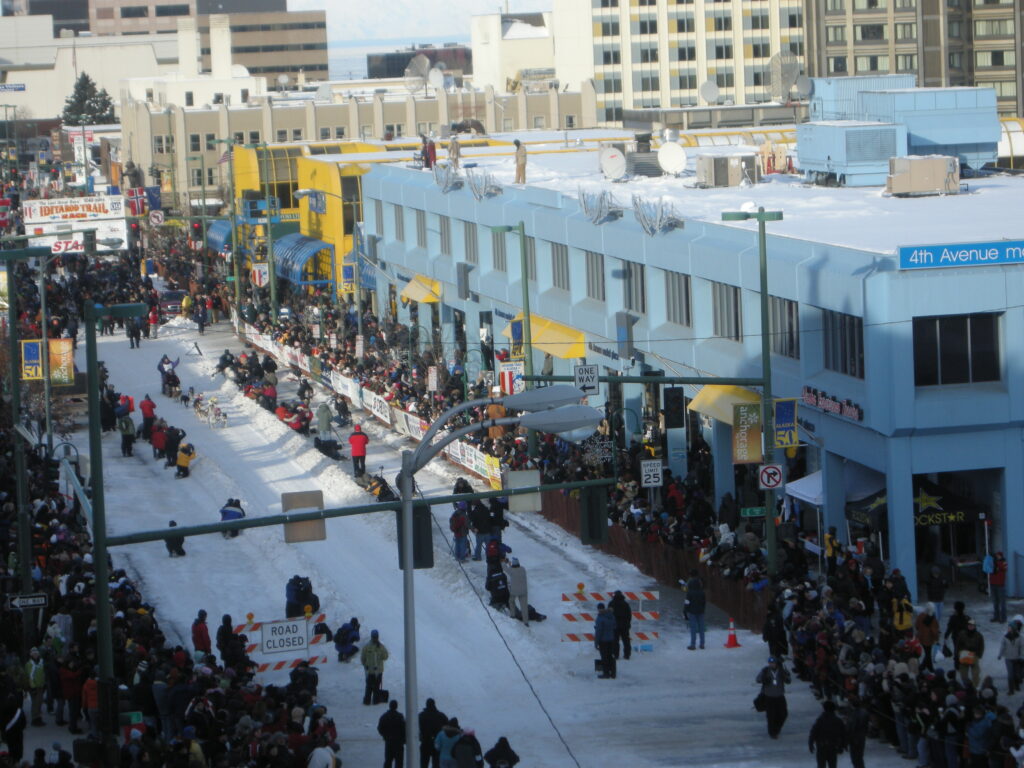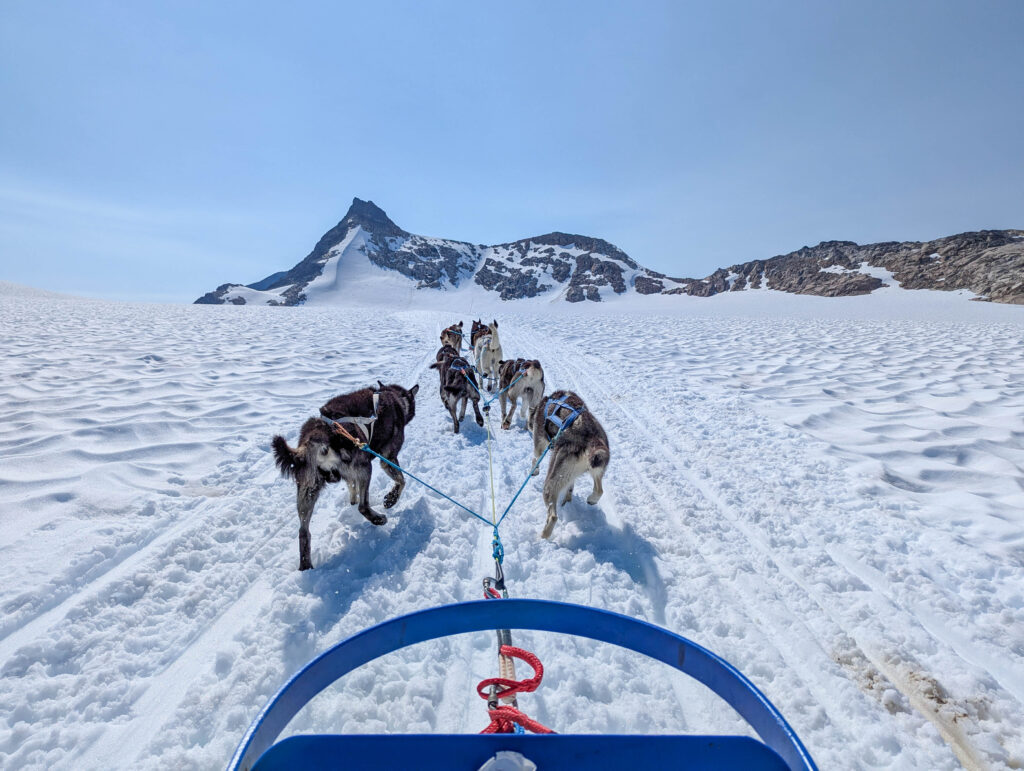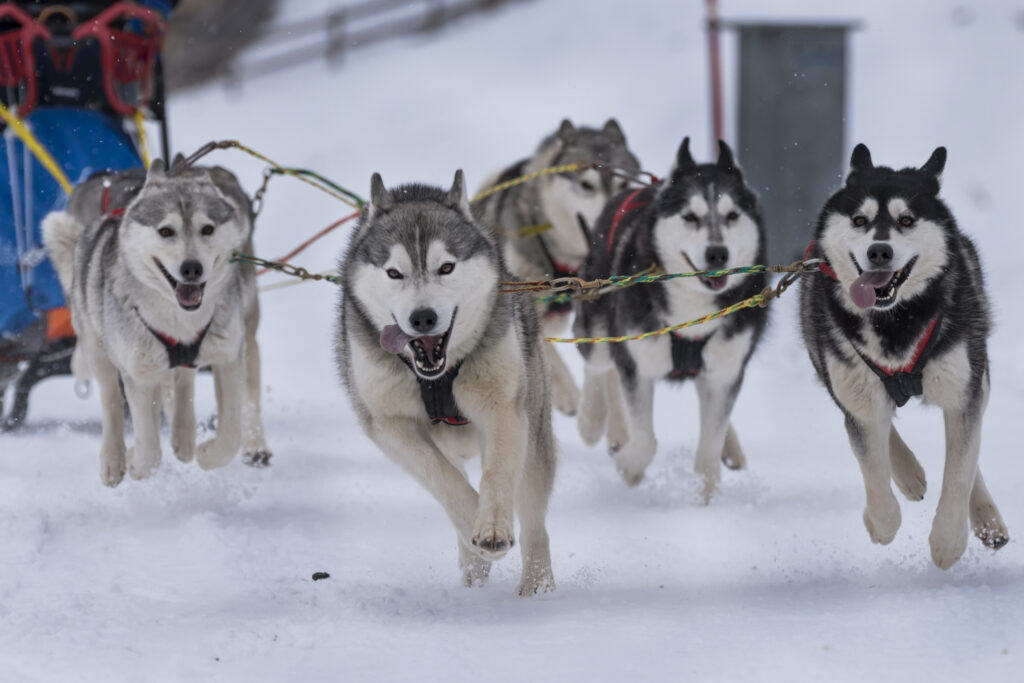A Brief History of Alaska’s Sled Dog Culture and Craft
Alaska’s rugged terrain and harsh climate have given rise to a unique and enduring tradition: sled dog culture. For centuries, sled dogs have been integral to the lives of Alaska’s indigenous peoples and early settlers. They’ve provided transportation, companionship, and are a symbol of survival in one of the most challenging environments on Earth. This brief history of Alaska’s sled dog culture highlights its cultural significance, historical development, and the modern-day celebrations of this rich craft.
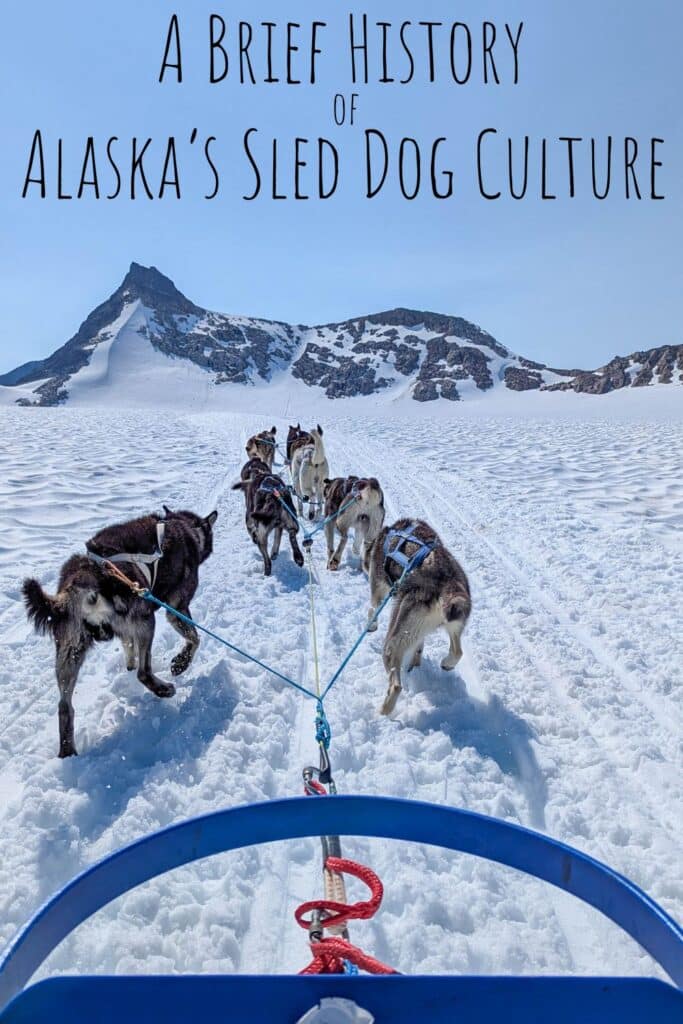
Early Beginnings: The Role of Sled Dogs in Indigenous Cultures
Sled dogs have been part of Alaska’s indigenous cultures for over 2,000 years. Indigenous groups like the Inupiat, Yupik, and Athabascan peoples relied on these animals for transportation across snow-covered landscapes and icy terrains. The sled dog was not only a mode of transport but also a vital component of subsistence hunting and trade.
In these early societies, sled dogs were considered invaluable assets. They were bred for their endurance, strength, and ability to thrive in extreme conditions. Indigenous people meticulously trained their dogs and developed specialized equipment, including traditional sleds, to ensure efficiency and reliability. The relationship between the people and their dogs was built on mutual respect and necessity. Sled dogs were central to the survival and success of these communities.
The dogs were typically a mix of Arctic breeds, such as the Siberian Husky, Alaskan Malamute, and Inuit dogs. They were selected for their ability to handle cold temperatures and long distances. These breeds were instrumental in developing a culture of mushing that adapted to the severe Alaskan winters.
The Gold Rush Era and Sled Dogs’ Expanding Role
The arrival of European settlers and the Gold Rush era in the late 19th and early 20th centuries significantly impacted Alaska’s sled dog culture. As prospectors flooded into the region seeking fortune, the demand for reliable transportation across Alaska’s challenging terrain increased. Sled dogs became indispensable to explorers, miners, and traders, helping to transport goods, supplies, and people.
One of the most famous events in this era was the 1925 Serum Run, also known as the “Great Race of Mercy.” When a diphtheria outbreak threatened the town of Nome, a relay of sled dog teams covered over 600 miles in harsh winter conditions to deliver life-saving medicine. The heroic efforts of the sled dog teams and their mushers garnered national attention and highlighted the critical role these animals played in Alaska’s history.
The Serum Run not only saved lives but also cemented the sled dog’s place in American folklore. The event demonstrated the incredible endurance and loyalty of sled dogs and their mushers, who braved blizzards and temperatures as low as -60°F to complete the mission. Today, the Serum Run is commemorated by the Iditarod Trail Sled Dog Race, which traces part of the historic route taken by the mushers.
Sled Dog Racing: A Modern Tradition
Sled dog racing emerged as a significant sport in Alaska during the early 20th century. The Iditarod Trail Sled Dog Race, first held in 1973 in it’s current form, is the most prominent and renowned race, capturing the spirit of adventure and endurance that characterizes sled dog culture. Spanning over 1,000 miles from Anchorage to Nome, the Iditarod tests the skills of mushers and their teams in some of the harshest conditions imaginable.
The Iditarod has become more than just a race; it is a celebration of Alaska’s sled dog heritage. It attracts thousands of spectators from around the world and features a variety of events, including ceremonial starts, musher meet-and-greets, and educational programs about sled dog history and training.
Another notable race is the Yukon Quest, which runs from Fairbanks, Alaska, to Whitehorse, Yukon, covering over 1,000 miles. The Yukon Quest, established in 1984, is known for its challenging route and extreme conditions, further showcasing the enduring spirit of sled dog racing.
Cultural Significance: Beyond the Race
Sled dog culture in Alaska is more than just a sport; it is deeply intertwined with the region’s identity and heritage. For many Alaskans, sled dogs are symbols of resilience, companionship, and the spirit of exploration. The traditions and stories associated with sled dogs are passed down through generations, reflecting the values and history of Alaska’s diverse communities.
The sled dog also holds cultural significance for Alaska’s indigenous peoples. Traditional knowledge about breeding, training, and caring for sled dogs continues to be preserved and celebrated through community events and cultural programs. These traditions help maintain a connection to the past and honor the role that sled dogs have played in shaping Alaskan history.
Modern mushers often emphasize the importance of preserving traditional practices while integrating new techniques and technologies. This balance ensures that the rich heritage of Alaska’s sled dog culture is maintained while adapting to contemporary needs and challenges.
Where to See and Celebrate Sled Dog Culture Today
Visitors to Alaska can experience sled dog culture firsthand through various events and attractions:
Iditarod Trail Sled Dog Race:
Held annually in March, this iconic race is a must-see for anyone interested in sled dog culture. The event features a ceremonial start in Anchorage, followed by the main race from Anchorage to Nome. Fans can watch the mushers and their teams, visit the Iditarod Headquarters, and learn about the history and significance of the race.
Mushing Museums and Exhibits:
The Alaska Wildlife Conservation Center outside of Anchorage and the Iditarod Trail Sled Dog Race Headquarters in Wasilla both offer exhibits and educational programs about sled dog history and the sport of mushing. These venues provide insights into the training, care, and legacy of sled dogs.
Sled Dog Tours:
For a more interactive experience, visitors can book sled dog tours with local operators. These tours offer opportunities to ride on a sled, meet the dogs, and learn about the training and care involved in mushing. Popular tour operators include Alaska Dog Sledding and Paws for Adventure.
Cultural Festivals:
Various festivals and events across Alaska celebrate sled dog culture. The Alaska State Fair and Fur Rendezvous in Anchorage often feature sled dog demonstrations and activities, providing a fun and educational experience for attendees.
Historical Landmarks:
Sites like the Carrie M. McLain Memorial Museum and the Iditarod Trail Sled Dog Race Museum offer historical exhibits that delve into the past of sled dog racing and its impact on Alaskan history.
Alaska’s sled dog culture is a vibrant and enduring part of the region’s history and identity. From its roots in indigenous traditions to its role in the Gold Rush and modern-day racing, sled dogs have been integral to the survival, exploration, and celebration of Alaska’s unique landscape. By participating in events, visiting museums, and engaging with local traditions, people can continue to honor and experience the rich heritage of Alaska’s sled dog culture. The sled dog, a symbol of endurance and teamwork, remains a cherished part of Alaskan life, linking past and present through its remarkable journey across the frozen wilderness.
